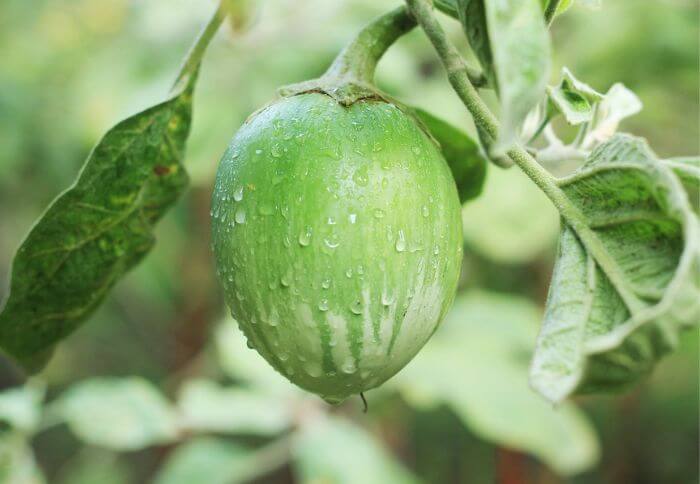Have you ever wondered about the origins of your favorite deep purple vegetable? Solanum melongena, more commonly known as eggplant, is a fascinating fruit that has captivated taste buds and sparked culinary creativity for centuries.
With its glossy skin and unique texture, this vibrant member of the nightshade family has a rich history dating back to ancient times. Join me on a journey to discover the secrets and surprises hidden within this enigmatic and versatile ingredient.
The Anatomy of Globe Eggplants
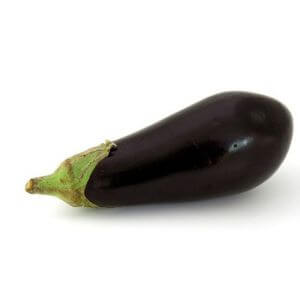
The anatomy of globe eggplants reveals a fascinating interplay of colors, textures, and flavors. At first glance, these plump fruits sport a vibrant deep purple skin that invites you to explore further.
As your fingers trace the smooth surface, you notice subtle indentations that provide structure to the vegetable. Slicing into an America eggplant unveils its hidden wonders – a creamy white flesh with tiny seeds scattered throughout.
Contrasting with the outer skin, this inner layer exudes a slight bitterness that mingles flawlessly with other ingredients in various culinary endeavors.
One cannot overlook the unique shape of these eggplants – an attribute that sets them apart from their elongated counterparts. The ample roundness makes them ideal for stuffing or incorporating into hearty stews and curries where they effortlessly absorb flavors from surrounding ingredients.
Seeking even more diversity within this variety, some rare specimens showcase multicolored streaks on their skins – flashes of green or deep red that add visual appeal to any dish.
Understanding the anatomy of globe eggplants opens up limitless possibilities for gastronomic creativity. From simple stir-fries to complex Mediterranean dishes like moussaka or ratatouille, these versatile vegetables offer endless opportunities for experimentation in the kitchen.
Their ability to adapt to different cooking techniques and flavor profiles ensures that every bite is met with excitement and satisfaction.
Culinary Versatility
Roasting and grilling
Roasting and grilling are two popular methods to transform the humble globe eggplant into a mouthwatering culinary experience. When it comes to roasting, the key lies in embracing simplicity.
Drizzle the eggplants with olive oil, sprinkle some salt and pepper, and watch as they slowly caramelize over an open flame. The smoky flavor that infuses every inch of these roasted gems is unmatched, adding depth and richness to any dish.
On the other hand, grilling offers a different take on cooking globe eggplants. This method allows them to develop a delightful charred exterior while retaining a tender interior.
By slicing the eggplants lengthwise into thick rounds or halving them for faster cooking, you expose more surface area to high heat, intensifying their natural flavors. Pair these grilled slices with fresh herbs like basil or mint for an added burst of freshness.
Both these techniques offer unique advantages when working with American eggplants. Roasting lends itself well to creating creamy dips or spreads by simply blending the soft flesh with garlic and Tahini sauce—a Middle Eastern delight known as Baba Ganoush.
Grilling can be equally versatile; topping grilled halves of eggplant with tomato sauce, cheese, and breadcrumbs before popping them under a broiler yields a delectable variation of stuffed eggplant Parmigiana.
Whether you choose to roast or grill these delicious globes of goodness depends on your desired outcome—roasting accentuates their rich flavor profile while grilling adds complexity through charring.
Roasted Globe Eggplant Recipe
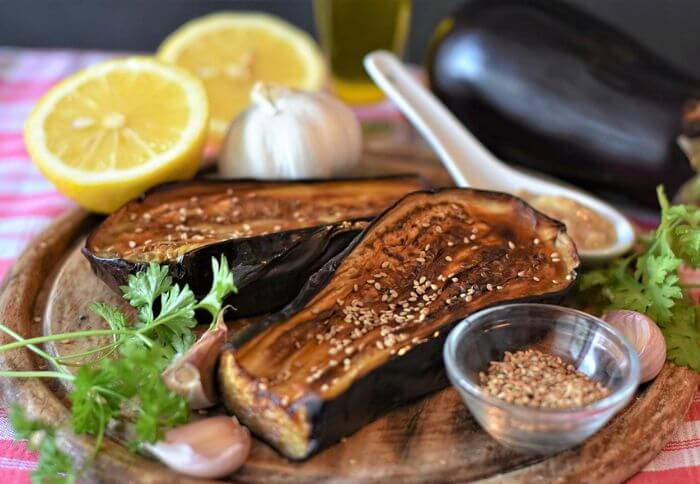
Ingredients;
– 1 large eggplant
– 2 tablespoons olive oil
– Salt and pepper to taste
Instructions:
- Preheat the oven to 400°F (200°C).
- Cut the eggplant into slices or cubes.
- Drizzle olive oil over the eggplant and toss until evenly coated.
- Season with salt and pepper.
- Place the eggplant on a baking sheet in a single layer.
- Roast for 25-30 minutes, or until tender and slightly golden.
- Serve hot as a side dish or use in other recipes as desired.
Related read; learn about green eggplants
Frying and sautéing
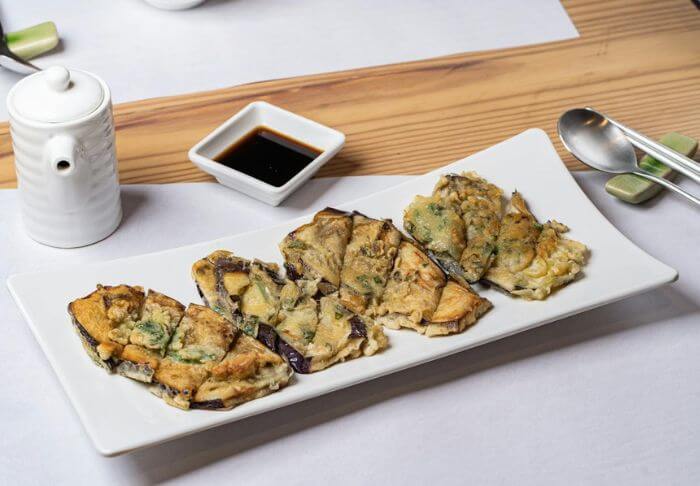
Frying and sautéing are two popular cooking techniques that can transform humble globe eggplants into mouth watering dishes.
Frying involves submerging the sliced eggplants in hot oil, resulting in a crispy outer layer and a tender, melt-in-your-mouth interior. As the eggplant slices sizzle in the pan, they absorb just enough of the oil to create a golden brown crust without feeling overly greasy.
This method is not only perfect for creating delicious appetizers or satisfying side dishes but also for adding texture and depth to main courses.
On the other hand, sautéing allows you to preserve more of the natural flavors of globe eggplants while still achieving a beautifully caramelized finish.
By cutting them into chunks or strips and cooking them over high heat with a small amount of oil, you can retain their moisture and produce succulent pieces that burst with flavor when bitten into.
Sautéing is ideal when combining eggplants with complementary ingredients like tomatoes, onions, garlic, or fresh herbs as these flavors will blend harmoniously during the quick cooking process.
Both frying and sautéing offer distinct advantages when it comes to cooking American eggplants. While frying creates an irresistible crunchiness that pairs well with creamy dips or serves as appetizing finger food on its own; sautéing showcases their inherent taste while capturing their smoky aroma.
Whether you prefer your eggplant delicately fried or gently sautéed until they become slightly charred perfection, these techniques unveil an easy way to prepare this variety of eggplants.
Fried eggplant recipe
:Ingredients
– 1 large eggplant
– 1 cup all-purpose flour
– 2 eggs
– Salt and pepper to taste
– Vegetable oil for frying
Instructions:
- Slice the eggplant into 1/4 inch thick rounds.
- In a shallow dish, beat the eggs with salt and pepper.
- Dip each eggplant slice into the beaten eggs, then coat it in flour.
- Heat oil
- Fry the coated eggplant slices until golden brown on both sides.
- Drain excess oil.
- Serve hot as an appetizer or side dish.
Baking and stuffing
When it comes to cooking with these eggplants, baking and stuffing them can turn an ordinary vegetable into a mouthwatering delight. Baking brings out the natural sweetness of the eggplant while adding a delightful smoky flavor.
By slicing the eggplants in half lengthwise and placing them on a baking sheet, you can drizzle olive oil over the flesh for moisture and then sprinkle with your favorite seasonings.
Whether it’s a simple combination of salt, pepper, and garlic powder or a more complex blend of herbs like oregano and thyme, experimenting with different flavors can take your baked eggplants to new heights.
But why stop at just baking when you can stuff these versatile vegetables? By scooping out some of the flesh from each half after baking, you create little cups that are perfect for filling with tasty ingredients of your choice.
From hearty mixtures featuring ground meat or lentils to vegetarian options with quinoa or feta cheese, there are endless possibilities when it comes to stuffing globe eggplants. The key is finding the right balance between flavors and textures so that each bite is packed full of deliciousness.
Baked eggplant recipe
– 1 large eggplant
– 2 tablespoons olive oil
– Salt and pepper to taste
Instructions:
– Preheat the oven to 400°F (200°C).
– Slice eggplant (thick rounds)
– Brush with olive oil. Also season with salt and pepper.
– Place the slices on a baking sheet and bake for 20-25 minutes, or until golden brown and tender.
– Remove from the oven and serve hot as a side dish or in your favorite recipe. Enjoy!
FAQs
Tips to growing eggplants in the US
Globe eggplants, with their glossy purple skin and creamy flesh, are one of the most versatile vegetables to have in your garden.
Successfully growing eggplants in the US requires some careful planning and attention, as they thrive best in warm climates. One key tip is to start by choosing the right variety for your region. For example, in cooler northern states, it is advisable to go for varieties that have a shorter growing season.
After selecting the appropriate variety, prepare your soil well before planting. Eggplants prefer rich, organic soil that drains well.
Adding compost or well-rotted manure can greatly improve the soil’s fertility and drainage capabilities. Additionally, ensuring consistent moisture levels will contribute to healthy growth. Eggplants need about an inch of water per week during their growing season but be cautious not to overwater as it could lead to root rot.
To encourage higher yields and reduce pest problems, consider using mulch around your eggplant plants. Organic mulches like straw or wood chips help retain moisture while also keeping weeds at bay, reducing competition for nutrients and sunlight.
Some pests common on these plants include aphids and flea beetles; practicing good garden hygiene by removing infested leaves promptly can help prevent these insects from proliferating further.
Growing eggplants successfully in the US takes time and effort but is undoubtedly rewarding when you get those luscious fruits come harvest time!
By following these tips – selecting the right variety for your area, improving soil fertility through organic matter addition, maintaining consistent moisture levels
When to find fresh American eggplants
When it comes to finding fresh globe eggplants, timing is everything. These versatile vegetables are at their prime during the peak growing season, which typically runs from late summer through early fall.
During this time, you can expect to find a wide variety of globe eggplants in local farmers markets and grocery stores, each with their own unique flavors and textures.
One useful tip for finding the freshest eggplants is to look for those that are firm and glossy. A vibrant, smooth skin indicates that the eggplant is ripe and ready to be enjoyed. Avoid any bruised or wrinkled ones as they may have started to spoil or lose their flavor.
If you’re lucky enough to have access to a backyard garden or know someone who does, you can even try growing your own globe eggplants!
With some careful planning and proper care, you could harvest these juicy purple gems right from your own soil. The satisfaction of enjoying freshly picked produce is truly unbeatable!
Remember, when it comes to enjoying the best flavor and texture from globe eggplants, choosing them at the peak of freshness is key.
Whether purchasing them from a farmer’s market or exploring your green thumb in the garden, keep an eye out for firmness and glossiness when hunting for these delectable vegetables. So go ahead – explore new recipes featuring this versatile ingredient while they’re at their seasonal best!
Proper storage techniques
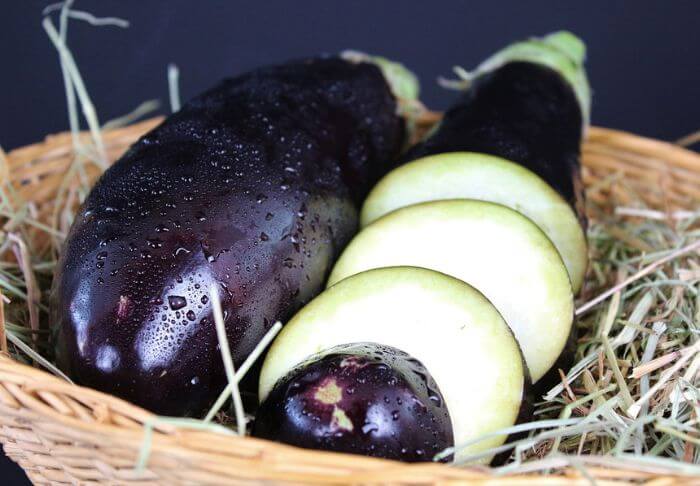
Proper storage techniques are essential to ensure the longevity and quality of globe eggplants. These versatile vegetables deserve proper care to maintain their firmness and flavor, whether you’ve just brought them home from the farmers’ market or harvested them from your garden.
To start, it’s crucial to keep eggplants in a cool place. Their vibrant purple skin may look sturdy, but these delicate veggies can easily wilt if exposed to heat.
A temperature between 45-50°F (7-10°C) is ideal for preserving their freshness. Wrapping individual globe eggplants in paper towels and storing them in a perforated plastic bag will help maintain moisture levels while preventing condensation buildup.
Moreover, it’s important to separate ripe eggplants from unripe ones during storage. Ripe eggplants have glossy skin with a uniform color and feel slightly heavier than the unripe ones.
By doing this, you prevent ethylene gas released by ripened fruits from accelerating spoilage of other produce stored alongside the globe eggplants.
By taking these simple yet effective precautions, you can savor the full potential of your eggplants long after purchase or harvest.
Proper storage helps retain their enticing color, firmness, and taste so that you can enjoy culinary creations like Baba Ghanoush or Eggplant Parmesan any time you crave something deliciously wholesome!
sources:
